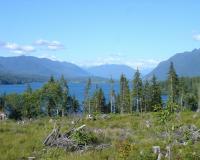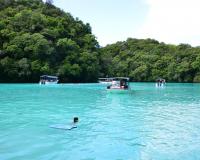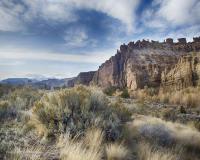
Vibrant Environment
All | Biodiversity | Climate Change and Sustainability | Environmental Justice | Governance and Rule of Law | Land Use and Natural Resources | Oceans and Coasts | Pollution Control

Rice is a primary food source for more than half of the world’s population—especially in Asia, Africa, and Latin America. In China, the rice-consuming culture I’m most familiar with, rice is breakfast, lunch, dinner, and dessert. Even the Chinese character for “cooked rice” simultaneously means “food.” Rice is security, sustenance, and life itself.

Tribal nations have been leading the way in climate change adaptation planning long before local governments even got started.

According to a 2020 report published in Nature, up to 20 percent of the global carbon budget could be consumed by construction over the next 30 years.

I encountered an induction cooktop for the first time recently, and my life has never been the same. Boiling water, which usually bores me to tears, took half as much time as it did on a gas stove. Garlic sizzled in seconds; broccoli softened in a minute or two. With a press of the on button, I sped up time itself, whizzing through a recipe that would take me an hour on a traditional electric stove, 45 minutes on a gas cooktop.

When Russian troops swarmed over the border last February, Ukraine became the first country possessing nuclear power plants to be invaded. The attackers seized several of the generating facilities and temporarily entrenched around the mothballed reactor at Chernobyl. At this writing, Moscow’s intentions with regard to the operating power plants was unclear.

In February 2022, the Biden Administration committed to spending over $1 billion on Everglades restoration efforts. Just this past month, the Administration proposed another nearly half billion. Why is there suddenly so much political pressure to save the Everglades? The truth is, this pressure is not new.

Each year, the Environmental Law and Policy Annual Review (ELPAR)—a collaboration between Vanderbilt University Law School and ELI—identifies some of the year’s best academic articles that present legal and policy solutions to pressing environmental problems. ELI Senior Attorney Linda Breggin, Vanderbilt Law Prof. Michael Vandenbergh, and students in a Vanderbilt law class select 20 of the most creative, persuasive, and feasible proposals in the environmental legal literature.

The COVID-19 pandemic has exposed and exacerbated inequities that lead to differences in health outcomes, particularly for racial and ethnic minority groups. One community that has been particularly affected is the Pacific Islander community in the United States, which has experienced exceedingly high rates of infection, hospitalization, and morbidity.

In the spring of 1972, environmental law was still in its infancy in many places around the world. Here in the United States, NEPA, the Clean Air Act, and ELI itself were toddlers—all under three years old—and the Clean Water Act wouldn’t be amended to what we know it as today until that fall. Within this setting, the UN hosted the first global Conference on the Human Environment in Sweden.
